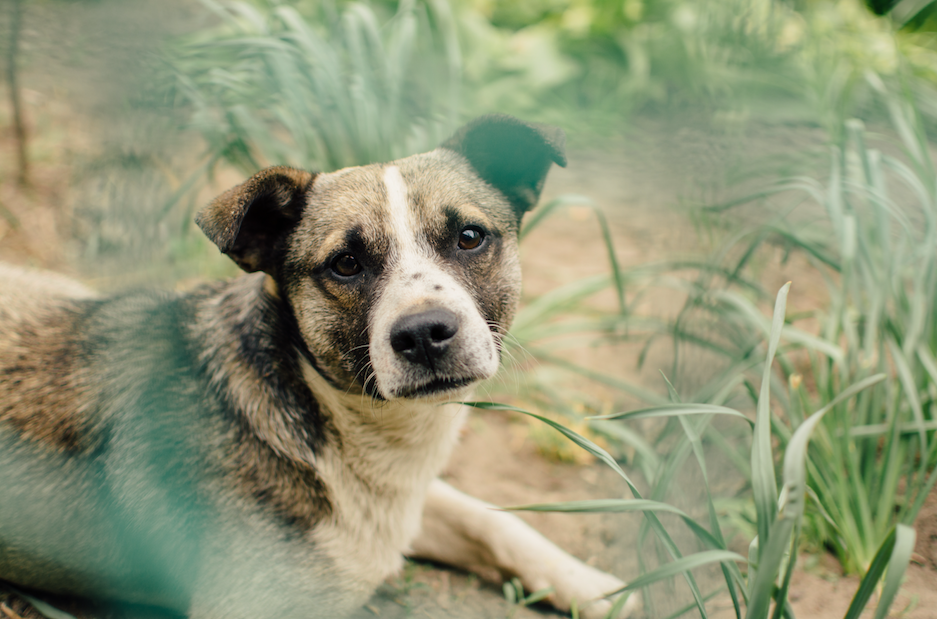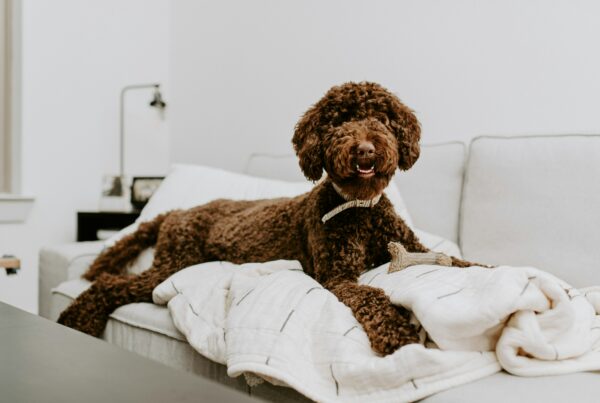Spring’s official here! Whether yours is grand, tiny, minimalist or teeming with plant life, the chances are that your outdoor garden is a treat that few New Yorkers enjoy and that nearly all dream of having. In the Big Apple, you might be lucky enough to have a ground floor apartment with a garden, a small plot on which to grow grass and perhaps a small vegetable garden or a sunny rooftop terrace for flowers and small shrubs. However, regardless of the size of your garden, if you are sharing it with Fido, then you need to take a few steps to ensure it is as safe for him as it is pleasant. This is especially true on warm, sunny days, when the hours can go by while you and your pooch play fetch, enjoy some active play, or catch a few rays of good old fashioned Vitamin D.
Pick Dog Friendly Plants
Because your backyard may be relatively small, it is easy to keep track of the full list of plants and flowers grown there. If you are starting from scratch, check out the SPCA’s list of plants which are toxic to dogs. If you are taking over an existing yard and there are plants you cannot identify, consider a little help from a landscape artist.
You might be surprised at how toxic everyday flowers such as azalea, lilies, or daffodils can be. There are many pet friendly alternatives, so make sure to bring your list of no-nos when you go shopping for plants or seeds. Ideal plants and flowers include African violet, thyme, petunia, jasmine, marigold, and snapdragon.
Signs of plant toxicity in pets including vomiting, lethargy, loss of appetite or difficulty breathing, so if you notice any of these, take your dog to the vet’s immediately. Some plants are okay to induce vomiting for, others are not, so your first move should be to make a call to the vet for first aid instructions.
Choose Dog Friendly Fertilizers and Grass
Grass seed is a common garden danger for canines, because it has an arrow-like shape that can become lodged in your dog’s throat. Grass seed tends to grow on very long grass, so keep your yard short and well manicured. Also, pick dog-friendly grass varieties like Bermuda, which is sturdy and will hold up to paw traffic and regular dog frolicking.
Fertilizer can be deadly to dogs, even if consumed in small quantities. Most require a 24-hour waiting period before dogs can use the lawn, so be very strict when it comes to keeping Fido indoors for this time frame. Better yet, use safe fertilizers such as seaweed (which is applied as a spray-on liquid), grass clippings, or compost.
Beware of Dog Escapes
Dogs are naturally curious creatures who love to check out other pooches walking by. They may get footloose if they are home alone, and try to dig their way to freedom, especially if your garden is adjoined to another yard with dogs. To stop Fido digging, consider planting a sturdy hedge between your garden and fence, or be creative and pave a small ‘path’ between the fence and the garden.
If your dog loves digging more than life itself, make him his own pit by digging up a rectangular section of soil, filling it up with sand, and burying Fido’s favorite toys in there. Watch him dig away for hours; it may require a bit of sweeping up, but your dog deserves to have a safe outlet for his ‘hobby’.
Finally, ensure your fence is ultra sturdy, so that other animals cannot get in your garden.
A Nice, Shady Spot
In the height of summer, does your dog have a full bowl of fresh water at all times and a nice shady spot in which to rest? Consider placing an outdoor dog house or ensure he has a tree to rest under when he needs a bit of shade. Dogs can easily get dehydrated and, like humans, their skin can get burned so avoid being in the garden during peak hours of sunlight.
Natural Insect Repellents
Like fertilizer, insect sprays can harm dogs, so it is important to get creative and make DIY sprays with water and natural products such as neem juice or essential oils. Wellness Mama has an excellent homemade bug spray, made with essential oils such as lemon eucalyptus, lavender, citronella, and geranium, to name just a few ingredients.
In addition to using essential oils, you can also plant rosemary, chamomile, mint, and other plants which are natural insect repellents that won’t harm your dog.
If you are lucky enough to have your very own yard in New York, then surely one of the greatest pleasures is relaxing in it with your dog. Ensure he is safe from the sun, insects, and potential toxins by picking the right plants and gardening products. Go as natural as possible and ensure you are always around to supervise Fido while he is enjoying his day in the sun.




